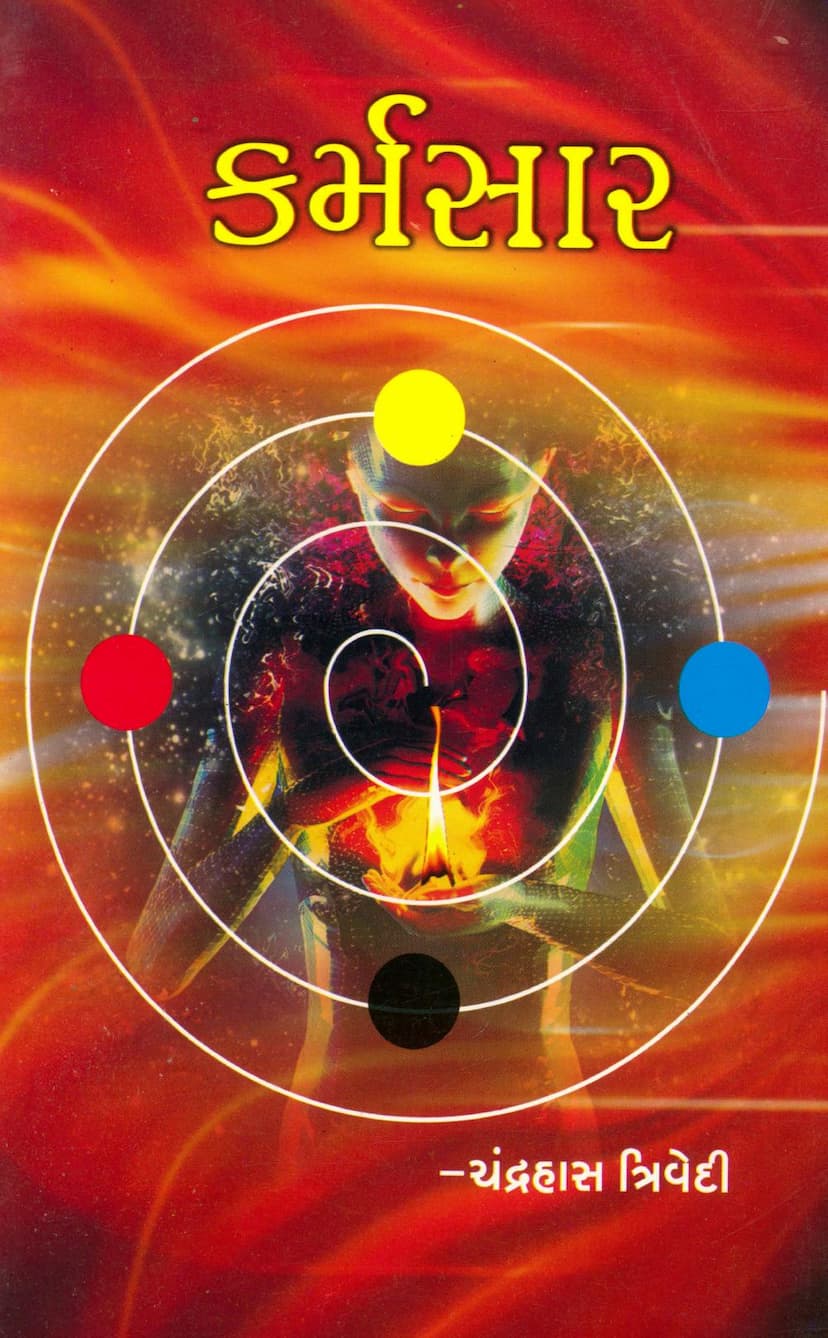Karmsar
Added to library: September 2, 2025

Summary
Here's a comprehensive summary of the Jain text "Karmsaar" by Chandrahas Trivedi:
Book Title: Karmsaar (The Essence of Karma) Author: Chandrahas Trivedi Publisher: Gurjar Agency
Overview:
"Karmsaar" is a profound exploration of the Jain philosophy of karma, aiming to simplify its intricate concepts for a general audience. The book delves into the scientific and logical principles behind karma, as understood within Jainism, to help readers navigate life with greater understanding, peace, and well-being. It seeks to demystify why certain individuals experience prosperity while others face hardship, why children are born with different attributes, and how our present circumstances are a consequence of past actions. The author emphasizes that while karma is a powerful force, it is not an absolute determinant, and understanding its mechanisms can empower individuals to shape their destiny.
Key Themes and Concepts:
-
Karma as the Root Cause: The book posits that everything happening in our lives – our current state, successes, failures, joys, and sorrows – is fundamentally due to karma. It addresses the apparent disparities in the world, where seemingly immoral people prosper and honest ones struggle, attributing this to the time lag between performing an action and its karmic fruition, often spanning across multiple lifetimes.
-
The Journey Through Lifetimes (Bhavantar): "Karmsaar" explains how karma transmigrates with the soul (Jivatma) from one life to another. It clarifies that it is not the physical body but the soul, carrying subtle bodies (Tejas and Karma sharira), that experiences the consequences of actions. The soul takes on new bodies as old ones become worn out, continuing its karmic journey.
-
The Four Types of Karmic Bondage (Bandh): The book elaborates on the four primary ways karma binds to the soul:
- Prakrutibandh: Determines which qualities of the soul are suppressed or obstructed by the karma.
- Sthitibandh: Defines the duration for which the karma will remain with the soul and its effects.
- Rasbandh: Dictates the intensity, force, and impact of the karma when it manifests.
- Pradeshbandh: Refers to the quantity of karmic particles (atoms) that attach to the soul.
-
Eight Karmas (Prakrutis): The book details the eight main karmic types and their specific impacts on the soul's qualities and experiences:
- Gyanavarniya Karma: Obstructs knowledge.
- Darshanavarniya Karma: Obstructs perception and faith.
- Vedaniya Karma: Causes feelings of pleasure (Shata Vedaniya) or pain (Ashata Vedaniya).
- Mohaniya Karma: Causes delusion, attachment, and the perpetuation of the cycle of birth and death.
- Aayushya Karma: Determines the lifespan and the type of birth (human, celestial, infernal, animal).
- Namkarma: Shapes the physical body, its characteristics, and social recognition.
- Gotra Karma: Determines one's social status and lineage.
- Antaraya Karma: Creates obstacles in enjoying gains, knowledge, power, and generosity.
-
The Role of Intention and Attitude (Upayog/Bhav): The book strongly emphasizes that the intention (Upayog or Bhav) behind an action is crucial. It's not just the action itself but the mental state, feelings, and underlying attitude that determine the karmic consequence and its "anubandh" (the subsequent cycle of karma). Pure intentions lead to auspicious karma, even if the outward action seems mundane, while impure intentions can taint even seemingly good deeds.
-
The Eight Modifications (Karans): "Karmsaar" explains the eight ways bound karma can be modified before it fructifies: Bandhankaran, Niddhatikaran, Nikachnanakaran, Sankraman, Udvartana, Apvartana, Udheerana, and Upshaman. These modifications allow for changes in the intensity, duration, or even the nature of karma through conscious effort and spiritual practice.
-
Karma is Not Absolute (Karm Sarva Sattaadheesh Nahi): While acknowledging karma's immense power, the book identifies other influencing forces: Time (Kaal), Nature/Inherent Properties (Swabhav), Destiny/Cosmic phenomena (Bhavitavyata), Past Karma (Prarabdha), and Effort/Present Karma (Purusharth). Out of these, Purusharth is the only factor under our direct control, offering the possibility to mitigate negative karma and cultivate positive outcomes.
-
The Importance of Human Birth: Human birth is highlighted as exceptionally precious because it is during this life that an individual possesses the intellectual capacity and free will to understand karma, make conscious choices, and actively work towards liberation.
-
The Ultimate Goal: Liberation (Moksha): The final chapter discusses the ultimate aim of transcending karma altogether and achieving a state of pure consciousness (Parmatma Dasha). This state, free from the cycle of birth and death, is characterized by eternal bliss and peace.
-
Practical Application: The book encourages readers to cultivate virtuous qualities, practice mindfulness, engage in charitable acts, and develop compassion. It stresses the importance of right understanding (Samyak Darshan), right knowledge (Samyak Gyan), and right conduct (Samyak Charitra) as the path to spiritual progress and freedom from karmic bondage.
Author's Perspective:
Chandrahas Trivedi, a seasoned writer with diverse experience in economics, radio journalism, and management, turned to spiritual and literary pursuits in his later years. His deep study of various religions, particularly Jainism, has informed his insightful approach to explaining complex philosophical concepts in an accessible manner. He believes that understanding karma can lead to a more peaceful and purposeful life and ultimately guide individuals towards their spiritual goals.
In essence, "Karmsaar" serves as a practical guide to understanding the laws of karma within a Jain framework, empowering readers to live more consciously, ethically, and joyfully, with the ultimate aim of achieving spiritual liberation.